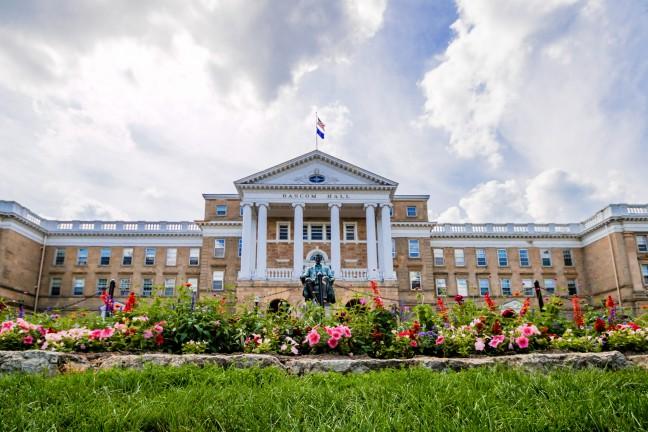Marginalized communities have faced opportunity gaps after college, according to experts. This, according to the sources, is in part due to a job market that favors white graduates.
Noah Williams, professor of economics and the Director of the Center for Research on the Wisconsin Economy, explained how the Wisconsin job market has fared post-recession.
Though the job market has improved since the 2007 recession, the employment rate for recent college graduates is still lower than it was in the bustling economy of the year 2000, Williams said.
“Unemployment [in Wisconsin] has been at three percent or below for the past two years, which is historically low,” Williams said. ” … But the primary economic issue facing the state has been the slow growth of the labor force.”
There has been a great increase in the number of four-year degree-holders who are neither employed nor enrolled in further schooling — known as idling, according to the Economic Policy Institute.
Certain demographics are recovering from the recession far more easily than others. Per the Economic Policy Institute, the employment rate of white college graduates has improved to nearly 2000 levels. But the gaps between employment levels for white graduates and black, Hispanic, and Asian American and Pacific Islander graduates have grown larger since the year 2000.
This gap has also been more quantitatively observed. According to a meta-analysis from researchers at Northwestern University, Harvard, and the Institute for Social Research in Norway, anti-black racism in hiring is still prevalent today.
Twenty-four studies done in 2015 have shown that, on average, “white applicants receive 36% more callbacks than equally qualified African Americans” and “24% more…than Latinos.” For women in the labor force, opportunity gaps occur where businesses are inflexible in terms of scheduling and paid leave.
Common cents: Unpacking the numbers behind the gender wage gap
“Though there has been a lot of progress on this, women are often primary childcare providers,” Williams said. “They need more flexible schedules. Even controlling for that, there is still a gap that is probably due to pure discrimination.”
Kaan Jittiang, a PhD candidate in the Department of Sociology at the University of Wisconsin, says requirement inflation can serve to exclude applicants who are not members of a social class that would allow them to acquire several college degrees, even if such degrees are not needed to perform the job.
Requirement inflation, according to Jittiang, involves jobs whose requirements are not necessarily reflective of the work performed. For example, a job may say a master’s degree is required, when a bachelor’s or an associate’s would suffice as long as on-the-job training is offered.
“It’s not simply about race — it’s also about gender and social class as well,” Jittiang said. “Sometimes, a company might consider someone from an Ivy League school over someone from another university with a high [grade point average]. But if you want to get into an Ivy League School, it requires social capital and money.”
Jittiang said education from institutions that are generally more pricey simply cannot be obtained by people who lack the funds to attend, regardless of admission status.
There are, however, also large racial disparities in college admissions in Wisconsin, Williams said.
Point Counterpoint: Focus on out-of-school factors to close achievement gap
“Particularly in Wisconsin, the bulk of the college-educated workforce has a smaller minority makeup than the high school population — there are fewer minority populations getting into college,” Williams said.
A close reference of such is UW. According to CollegeSimply, 76% of the student population is white, while only 2% of enrolled students are black and 6% are Hispanic.
Point Counterpoint: Evers must unfreeze voucher program to mend achievement gap
Williams said the current Wisconsin job market is rather tight, with an average of 1.2 unfilled jobs per each unemployed person in the state.
He adds, however, that there are unforeseen positives. Recently, many businesses have decreased the number of qualifications for the positions they are trying to fill, reducing requirement inflation.
This has led to an uptick in hiring from the formerly incarcerated population, who have a notoriously difficult time finding employment upon their release.
“Some businesses in the past may have been wary to do so, but given the economic conditions, they’ve been forced,” Williams said. “Hopefully this will continue when the labor market is not so tight.”
Other paths to increases in workforce diversity come from technology. Mark Richardson, CEO and founder of Unfinished Business, works to link young professionals from diverse backgrounds with potential employers. Recently, he began building an app called GigBlender that will streamline this process.
According to Madison.com, Richardson is dedicated to closing the large racial disparities that exist in Madison by going up against requirement inflation and giving marginalized identities access to the networks he has built. The app will be able to connect veterans, women, people of color, and members of the LGBTQ+ community, among others, to gainful employment opportunities.
Jittiang says that Richardson’s app has a lot of potential.
“This kind of app will allow people who were historically excluded more of a chance,” Jittiang said. ” … But there’s no guarantee that the attitudes of employers will change.”


















